Recently updated on October 7th, 2025 at 03:34 am
Ribbons of colour dash across the night’s sky. Rising, falling and flickering in an evermoving tapestry. Stillness engulfs you. Time evaporates.
Catching sight of the aurora borealis (often called ‘the northern lights’) – and time in the places they appear – is a spellbinding travel experience. So to savour every second, these are 14 best places to see the northern lights (plus the best season to travel).
What are the northern lights?
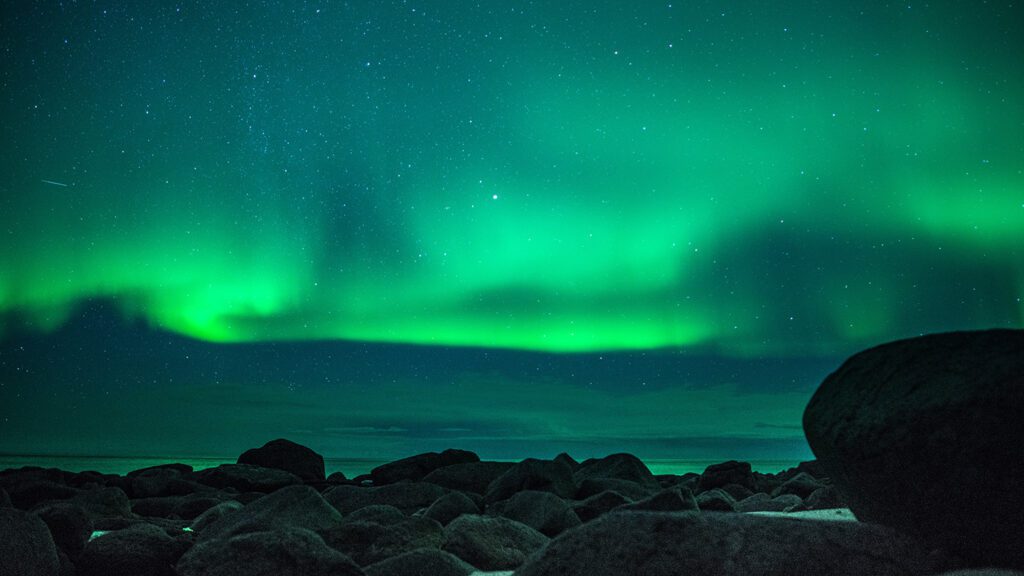

When solar wind from the sun collides with the earth’s magnetic field, it’s pulled towards the earth’s poles and released into the atmosphere. This reaction causes curtains of colour to appear in the dark sky – green, red, pink, violet, white, blue, or/and yellow.
Galileo Galilei coined the term ‘aurora borealis’ to describe this wonder by the north pole: combining words for the Roman goddess of dawn (Aurora) and the Greek god of the north wind (Boreas).
Today, adventurers venture to places of 60 to 75 degrees °N latitude and stay up till dawn on a clear night in anticipation.
When is the best time to see the northern lights?
September is a great month to see the Northern Lights. The earth’s axis tilts more towards the sun’s solar wind around the autumn equinox (22 September), meaning there’s a higher chance of this geomagnetic reaction in the atmosphere. Plus September’s cooler (rather than freezing) winter air and ice-free lakes and mountains make the following 10 places blissful retreats for northern lights watching.
However, the Northern Lights happen throughout the year and sightings are most prevalent between September and April. The winter obviously has the longest period of darkness, but remember that winter precipitation can cloud a normally bright Northern Lights sky. If you’re searching for a sighting during these months, try to gaze out between 9 P.M. and 3 A.M. on a clear night with as little light pollution as possible.
14 best places to see the Northern Lights
Look closely, there are some surprises along the way.
Finland (Lapland)
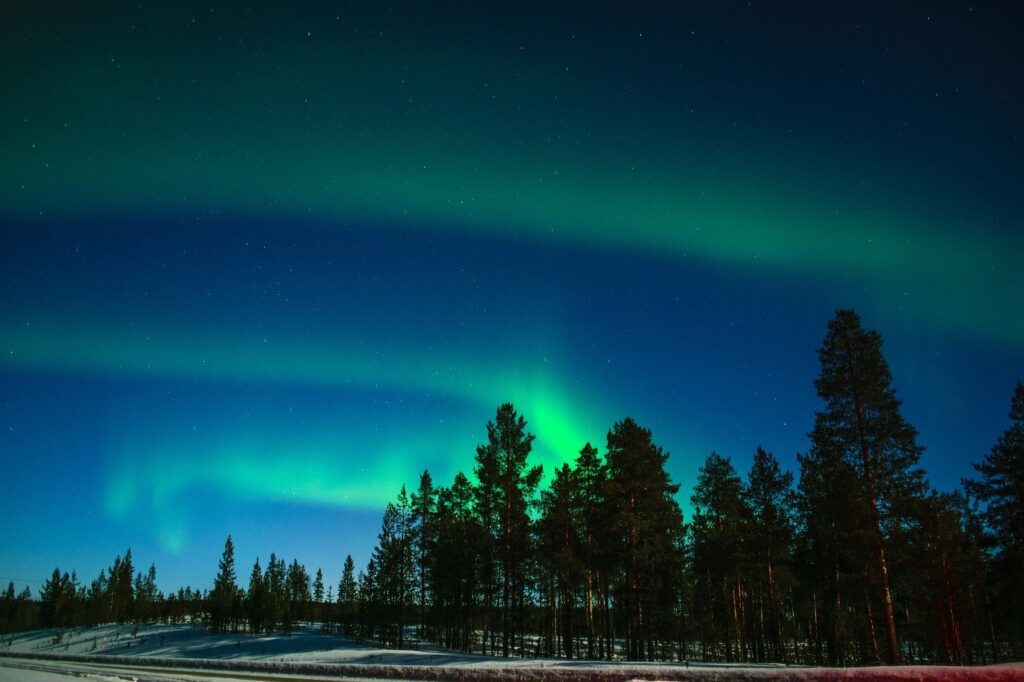

Head north to Finland’s enchanting Lapland for the highest chance of seeing the northern lights. Its 65-72°N latitude puts it in the ‘northern lights belt’ and causes these magical lights to appear around 200 nights per year.
Touching the arctic circle, Rovaniemi (Lapland’s capital and official home of Santa Claus) presents a snowy paradise and otherworldly viewing spots in the form of glass roof cabins staring up at night. Likewise, a 3-hour drive north takes you to remote, forest-filled Saariselkä – where sightings are common.
GET INSPIRED BY: Scandinavian Northern Lights tour
Iceland
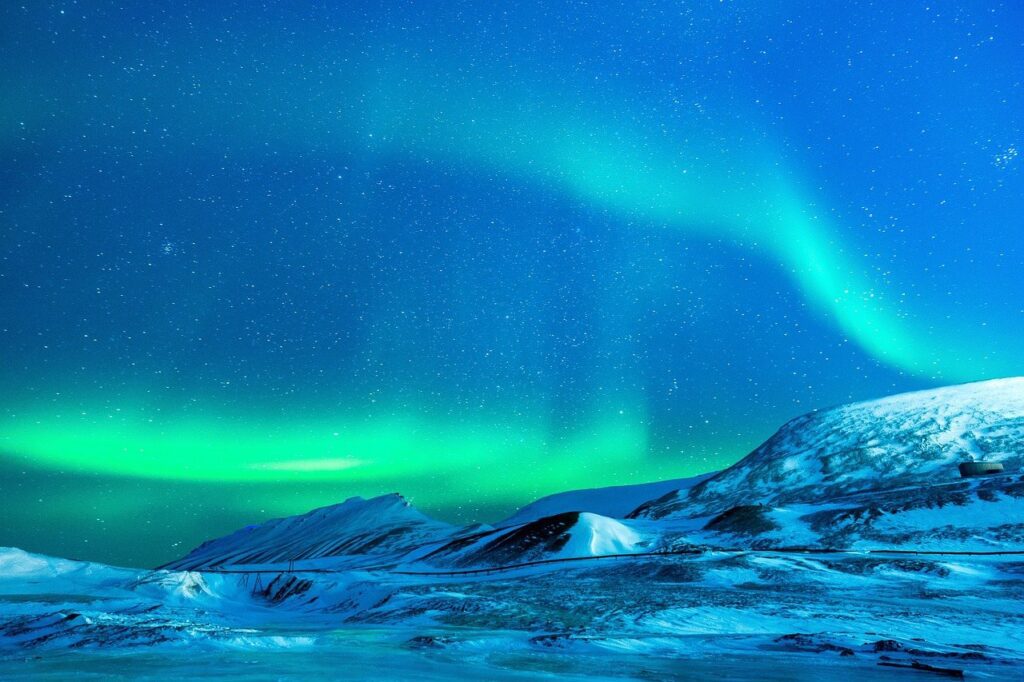

The ‘Land of Fire and Ice’ is also home to spectacular lights. Drift away from the artificial lights of its cool capital Reykjavik – 30 minutes by boat – to a blissful spot surrounded by mountains on Trafalgar’s Iceland tour. One of the world’s best places to see the northern lights. Elsewhere, Akureyri park (in the far north) and Vík (187km southeast of Reykjavik) are also spellbinding spots.
RELATED CONTENT: What to pack for a Northern Lights tour to Iceland
Norway
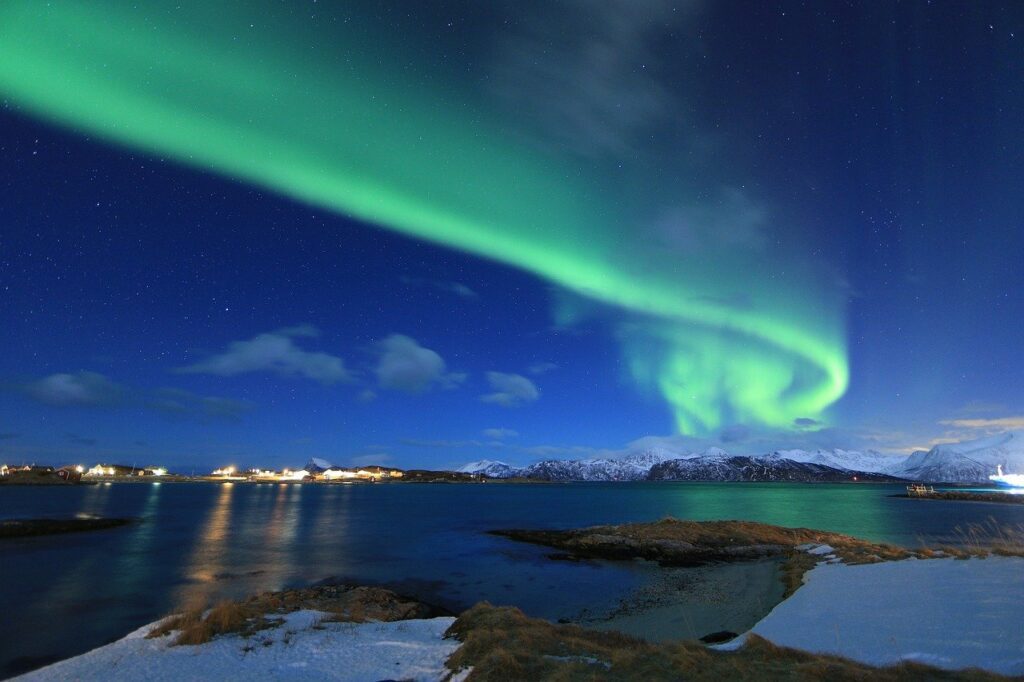

It’s only right that a country adorned in natural beauty is home to magical northern lights displays. We recommend heading to charming Tromsø (nicknamed the ‘capital of the Arctic’) to keep an eye out. As well as the lookout points at remote Alta in northern Norway – famed as ‘The Town of the Northern Lights’ among locals.
Sweden (Lapland)
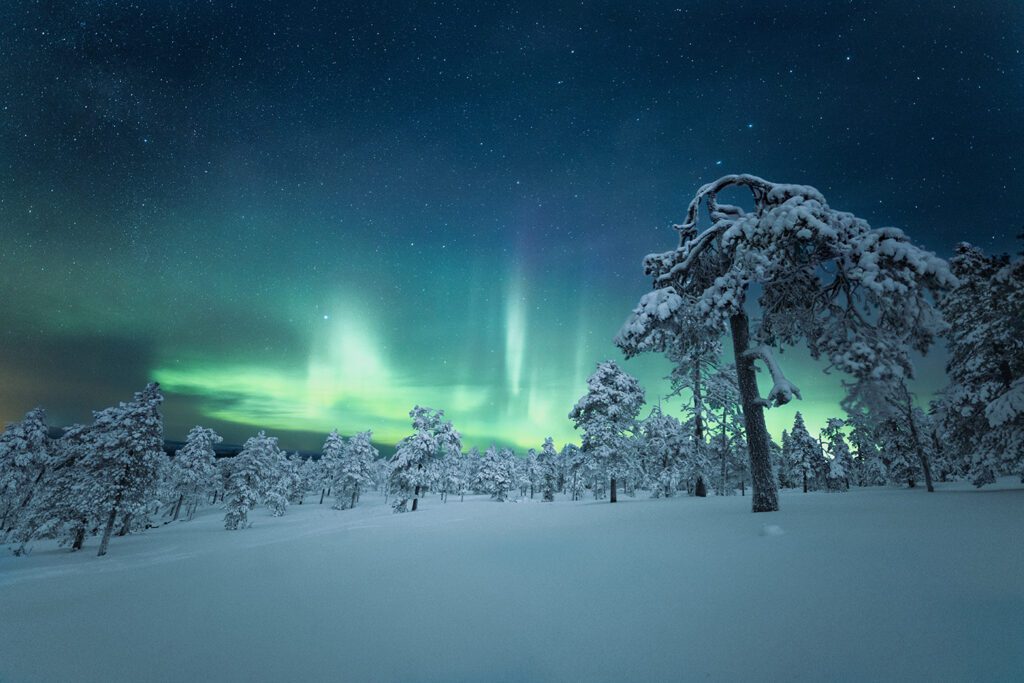

Swedish Lapland offers a mystical northern lights experience. Head to Abisko National Park – located in the ‘auroral oval’ (a highly active region centred on the earth’s magnetic pole where auroral emissions happen). What’s more, Abisko’s wonderfully low rainfall means the nights are clear and aurora borealis appearances for two weeks in a row aren’t uncommon.
Further afield, Kiruna (in the far north) feels like another world – especially while you eat dinner outside in eager anticipation of the lights on Trafalgar’s Scandinavia Northern Lights tour.
The United Kingdom
Dancing waves of colour have appeared in Scotland (the Isle of Skye), Ireland (Malin Head in Donegal’s Inishowen Peninsula) and England (Cornwall, the Lake District, Kent and Norfolk) – as recently as September 2025 due to the rare chance of strong solar wind and perfect clear conditions. It’s a clear example that aurora borealis is all about being in the right place, at the right time. So always keep your eyes peeled.
Luck may light up the night sky during our Best of Devon and Cornwall tour.
Estonia
A country of clean air and gorgeous islands, Estonia’s stock is rising as a northern lights retreat. Venture to Lahemaa National Park on the north coast, as the peninsula’s here jut out into the Gulf of Finland and its clear skies. Plus Viimsi and Paljassaare, near Estonia’s capital Tallinn.
The United States
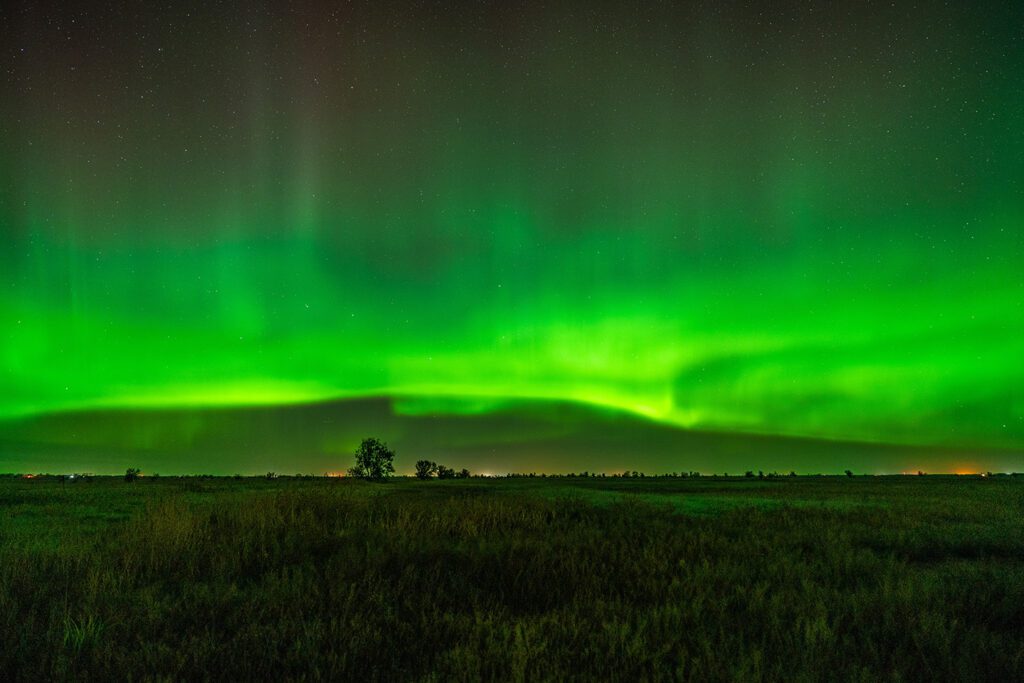

You read that right. Many of the world’s most colourful northern lights have been spotted in the United States. Top tip: head to Idaho Panhandle National Forest (80km south of the Canadian border) for stunning reflections off Priest Lake. Other options include Acadia National Park (Maine), Voyageurs National Park (Minnesota), Cherry Springs National Park (Pennsylvania) and North Dakota.
GET INSPIRED BY: US National Park Wonders tour
Alaska
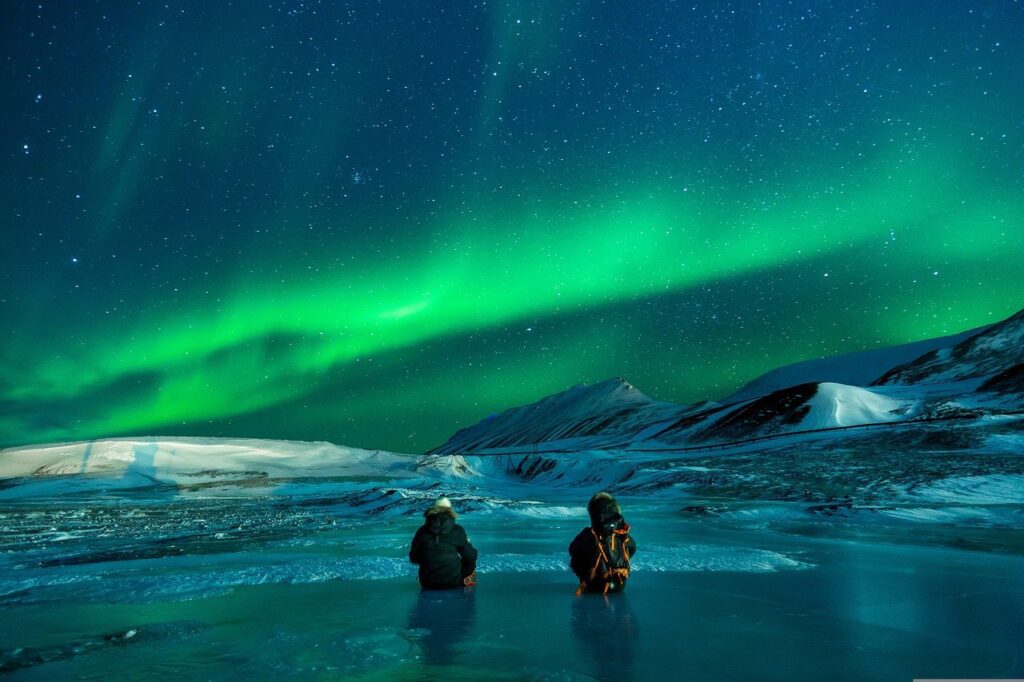

Take an enchanting trip to the US’ far northwest tip for ultra-clear sightings. Welcome to Alaska: where Fairbanks and Denali National Park offer two of the best places to see the northern lights. They are visible approximately 4 out of 5 nights in September.
GET INSPIRED BY: Majestic Alaska tour
Canada
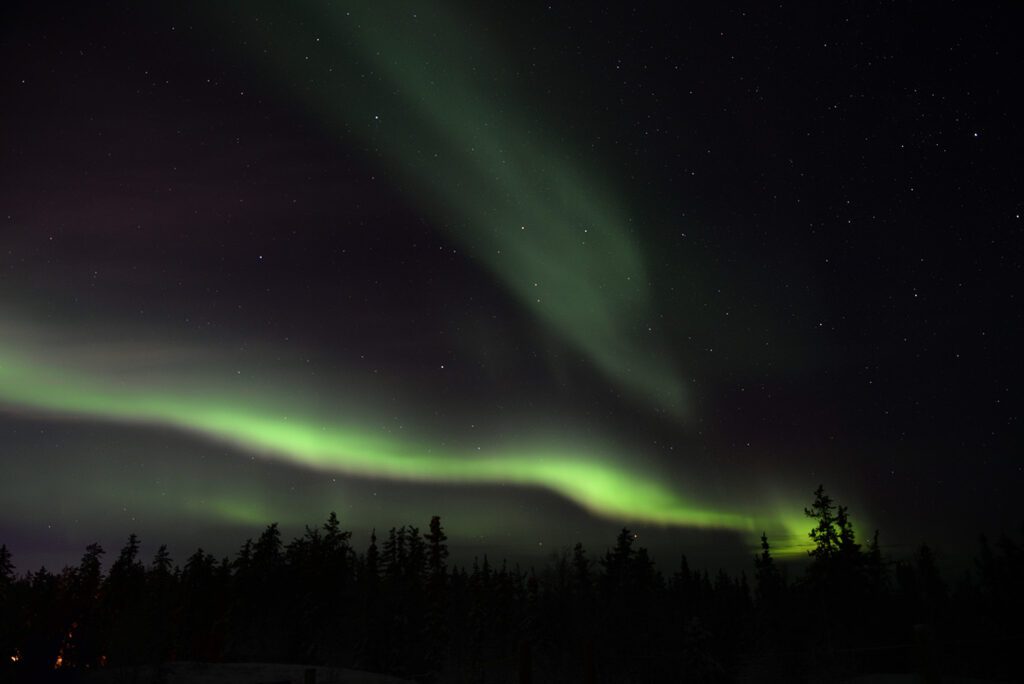

Canada is easily one of the best places to see the northern lights thanks to its northern latitude – with the highest solar activity found in September and October. We suggest picking a spot by Great Slave Lake in Yellowknife (northwest Canada), Jasper National Park (in Alberta), Wood Buffalo, Churchill and Yukon to soak it in.
Chance viewing the solar storm during our Spectacular Canadian Rockies tour.
Greenland
In a place so remote that most towns are only accessible via sailing or dog sledding, Greenland knows how to put on a Northern Lights show. With virtually no light pollution once you get far away from the city lights of Nuuk, you can enjoy the aurora activity while peacefully ice fishing or cuddling up in a cabin.
Saint Pierre & Miquelon
Yes, you can see the Northern Lights in France…though you’ll have to go quite far from Paris. Saint Pierre and Miquelon are an archipelago of eight French self-governing islands. They’re located near Canada’s Newfoundland, so while rare, there is a chance you could see the solar storm on French soil.
Denmark
Denmark may be the southernmost country in Scandinavia, but don’t count it out completely when it comes to Northern Lights viewing. Those willing to brave the cold in remote places like the islands off of Jutland may find a light show in the sky with hardly anyone to share it with.
The Southern Hemisphere
Aurora activity is the present across the globe, and while it’s not exactly the same as the Northern Lights, the Southern Lights are well-worth seeking out. Known as Aurora australis, the Southern Lights are visible in the Antarctic Circle in countries like Argentina, Chile, New Zeland, Australia, and the continent of Antarctica.
FAQ
How do I track the Northern Lights?
Don’t assume you need a thorough understanding of the Kp-index to track the Northern Lights — scientists will do it for you. You can access multiple websites from organizations like the National Oceanic and Atmospheric Administration or the University of Alaska up-to-date information regarding the aurora forecast for the present day.
What time can I see the Northern Lights?
Even if you frequent the best places to see the Northern Lights, your chances of spotting the solar storm depend on the right timing. The ideal time to see the Northern Lights is usually between 9 P.M and 3 A.M, although it is possible to see the aurora just after sunset or before sunrise.
Can you see the Northern Lights with a full moon?
Yes, you can see the Northern Lights during a full moon. It’s a misconception that the aurora is not visible during a full moon, though there is a little factual standing in the claim. A bright moon, especially in areas where there’s light pollution, can combine with a weak aurora presentation to effectively diminish the clarity of the Northern Lights.
RELATED CONTENT: 9 incredible natural wonders to witness with Trafalgar
We hope you enjoyed reading about the best places to see the northern lights. Where are you visiting first?
Author Ollie Poole is a travel writer who is passionate about lifestyle, culture, and creativity.